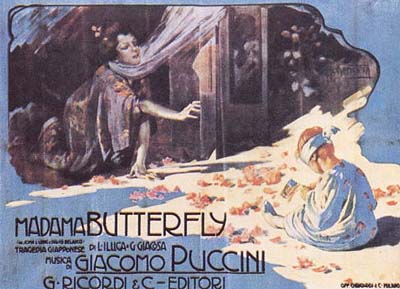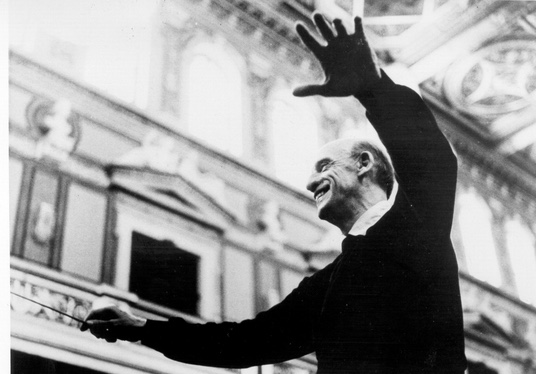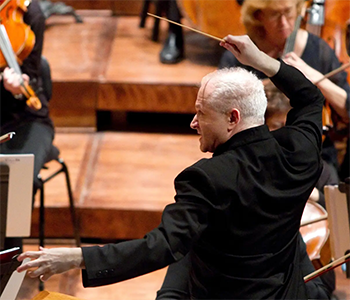by Daniel Hathaway
Last chances to hear repeating concerts: British composer & conductor George Benjamin (pictured) and countertenor Tim Mead, with The Cleveland Orchestra and Chorus (Saturday at 8 at Severance Music Center — read Mike Telin’s preview here), violinist Alan Choo (read Daniel Hathaway’s interview here), in several of Heinrich Biber’s mystical Rosary Sonatas with Apollo’s Fire (Saturday at 8 in Cleveland Heights), and Les Délices harpsichordist Mark Edwards in J.S. Bach’s “Goldberg” Variations (Saturday at 3 — a concert and conversation — and Sunday at 4 in Cleveland Heights.
One-off events include the the Euclid Symphony (Saturday at 7 at the Maltz), the Canton Symphony with pianist Garrick Ohlsson (Sunday at 3) The Cleveland Opera with Cleveland Women’s Orchestra in William Grant Still’s Highway 1, USA (Sunday at 3 at the Tudor Arms — read a preview here), Singers Companye (Sunday at 3 at the Maltz), Heights Arts Close Encounters (Sunday at 3 at Convivium 33 Gallery), and the Cleveland Orchestra Youth Orchestra and Chorus (Sunday at 7 at Severance).
Visit our Concert Listings for details of these and other performances.
ANNOUNCEMENTS:
“The Cleveland Orchestra and flutist, composer, and producer Allison Loggins-Hull have announced a series of four free concerts in collaboration with Cleveland community partners,” the Orchestra reported in a news release on Friday.
“ Loggins-Hull, the Orchestra’s Daniel R. Lewis Composer Fellow, curated the In Community Chamber Concert Series to capture the spirit of unity while highlighting Cleveland Orchestra musicians and three valued partners: H.K. School of Bandura, the Fatima Family Center, and Karamu House. She drew inspiration from the unique missions and histories of each partner for these intimate concerts.
“The In Community Chamber Concert Series culminates in a performance at Severance Music Center with members of The Cleveland Orchestra on May 11. It will feature music from throughout the series and a new work Loggins-Hull composed for string sextet.
Cuyahoga Arts & Culture’s Board of Trustees held their regularly scheduled meeting on Thursday, February 15. A news release reported key updates from the public meeting.
- CAC previewed plans for 2025 Project Support grantmaking.
- The board conducted other administrative matters and received an update on a potential November 2024 levy.
Access the meeting agenda and handouts here.
WEEKEND ALMANAC:
February 17 — by Jarrett Hoffman

The cast wasn’t an issue. Among its star-laden talent, the role of Cio-Cio san was sung by soprano Rosina Storchio, a fixture at La Scala who also performed in notable premieres by Leoncavallo and Mascagni. B.F. Pinkerton was portrayed by tenor Giovanni Zenatello, who would go on to sing the title role in Verdi’s Otello over 300 times. And taking the role of Sharpless was baritone Giuseppe De Luca, who would also create the title role in Gianni Schicchi at the Met a decade later.
When it came to the audience’s reaction at the premiere, the good news is that there was no throwing of fruits or other objects. Instead, those in attendance settled for politely hissing, jeering, and yelling at the stage. (It’s worth noting that, according to BBC Music Magazine, many of the composer’s detractors were present that opening night, “determined to turn the premiere into the wrong kind of spectacle.”) Puccini withdrew the opera after one night.
Not only was the opera under-rehearsed, but critics also felt that its second act (out of two in this original form) dragged. Undeterred, Puccini set about making revisions, which included dividing the second half into two parts, forming Act III. And when Madama Butterfly relaunched in Brescia three months later, it was an immediate success.
A happy ending for Puccini and the opera world…if not for the characters themselves.
February 18 — by Mike Telin

The young Dimitri exhibited musical talents at an early age and by his early teens hosted Saturday afternoon concerts at his home.
He studied at the Athens Conservatory as well as in Brussels and Berlin, where his teachers included Ferruccio Busoni. During the early to mid ‘20s he assisted Erich Kleiber at the Berlin State Opera.
The conductor made his U.S. debut with the Boston Symphony in 1936, and from 1937 to 1949 he was principal conductor of the Minneapolis Symphony Orchestra (now the Minnesota Orchestra). In 1949 he became co-conductor — with Leopold Stokowski — of the New York Philharmonic and in 1951 was named the Orchestra’s music director.
In addition to making numerous recordings for Columbia Records, Mitropoulos and the Philharmonic sought out new audiences by making appearances on television and giving performances at the Roxy Theatre.
During his tenure, he expanded the Philharmonic’s repertoire by commissioning new works and championing the symphonies of Mahler. Upon his departure in 1958, he was succeeded by his protégé, Leonard Bernstein. Click here to listen to Mitropoulos conduct the New York Philharmonic in a performance of Mahler’s Symphony No. 5.



